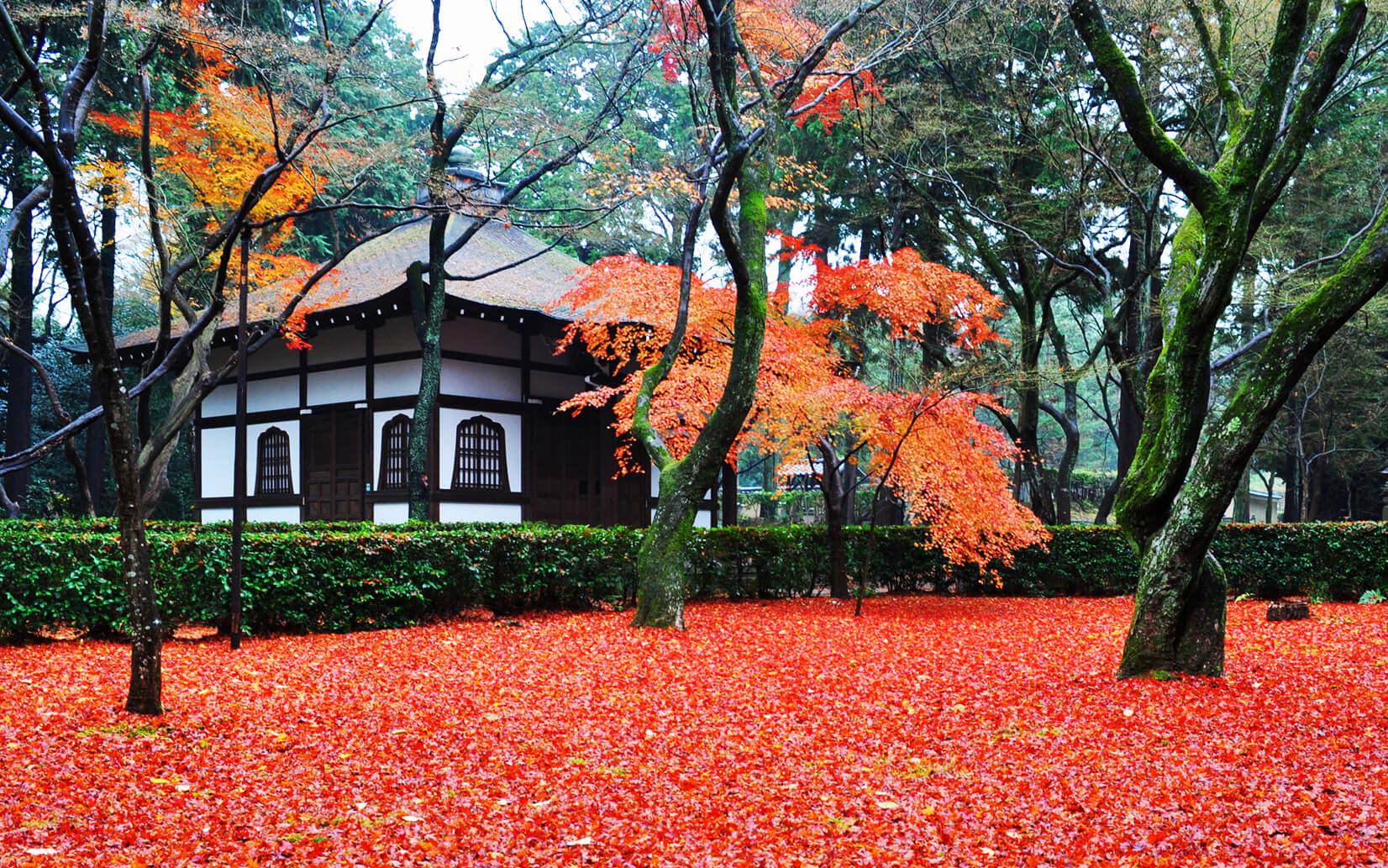Shinnyodo Temple, a lesser-known sanctuary in Kyoto’s Higashiyama district, is renowned for its breathtaking autumn foliage. Established in 984, this Tendai sect temple offers visitors a serene retreat from the bustling tourist spots, especially during the peak fall season in late November when its grounds transform into a vibrant canvas of red and gold.
Quick Facts about Shinnyodo
- Founded in 984, belonging to the Tendai sect
- Famous for autumn colors, best viewed in late November
- Expansive grounds with multiple buildings and a three-story pagoda
- Main areas free to enter; fee required for inner chamber and gardens
- About a 20-minute walk from Ginkakuji (Silver Pavilion)
- Houses important Buddhist artworks and historical artifacts
Rich Historical Background
Shinnyodo’s history dates back to the late Heian period. It was founded in 984 by Genshin, a high priest from Enryakuji Temple, and was initially named “Shinnyo-in.” Genshin was a key figure in Japanese Pure Land Buddhism, and his work “Ojoyoshu” greatly influenced Japanese Buddhism.
The temple enjoyed patronage from the imperial court and nobility in its early years. However, its fortunes were not always smooth. During the Onin War (1467-1477), like many Kyoto temples, Shinnyodo’s buildings were severely damaged. Miraculously, the temple’s principal image of Amida Buddha survived.
After several relocations, this precious Buddha image was enshrined at the present location in 1693, marking Shinnyodo’s reconstruction. During the Edo period (1603-1868), the temple gradually regained its former glory. Most of the buildings we see today, including the iconic three-story pagoda, were built during this time.
Shinnyodo is not just an important religious site but also a significant preserver of Japanese culture and art. The temple houses many precious Buddhist artworks, including intricately carved statues and beautifully painted screens. Most famous are two enormous paintings: one depicting the passing of the Historical Buddha and another illustrating the Pure Land of Pure Land Buddhism. These paintings are alternately displayed every six months, attracting numerous art enthusiasts and Buddhist scholars.
Over time, Shinnyodo has also become known as one of Kyoto’s premier autumn foliage spots. Each fall, hundreds of maple trees paint the temple grounds in fiery reds and golden hues, drawing photographers and nature lovers. Despite this, Shinnyodo maintains a relatively peaceful atmosphere compared to Kyoto’s more famous autumn viewing locations, offering visitors a quiet space for contemplation.
Today, Shinnyodo stands as both an active Buddhist temple and a cultural bridge connecting past and present. It continues to uphold centuries-old religious traditions while adapting to modern society’s needs, providing spiritual solace and cultural experiences to the local community and visitors from around the world.
Main Attractions
Inner Chamber of the Main Hall
In the paid area, the most striking feature is the inner chamber of the main hall. Visitors can admire:
- A large gold leaf canopy
- Lavish decorations and ritual props
- Statues of Monju Bodhisattva and Saicho (founder of Tendai Buddhism in Japan)
- Two huge paintings alternately displayed every six months:
- A depiction of the passing of the Historical Buddha
- A mandala illustrating the Pure Land of Pure Land Buddhism
Gardens
Connected to the main hall are rooms with elegant paintings on their sliding doors, offering views of the temple’s gardens:
- A contemporary dry garden reproducing a Japanese family crest with geometrically arranged stone patterns
- Another dry garden representing the painting of the passing of the Buddha
Best Time to Visit
While Shinnyodo is open year-round, the best time to visit is during autumn, particularly in late November when the fall colors are at their peak.
Getting There
From Kyoto Station:
- Take Kyoto City Bus number 5 for about 35 minutes (230 yen)
- Get off at the “Shinnyodo-mae” bus stop
- It’s a 5-minute walk to the temple
From Ginkakuji (Silver Pavilion):
- It’s about a 20-minute walk
Hours and Admission
- Open: 9:00 to 16:00 (last entry at 15:45)
- Open all year round
- Admission:
- Inner chamber and gardens: 500 yen (1000 yen during peak seasons)
- Other areas: free
Visitor Tips
- Check autumn foliage forecasts to plan your visit during peak colors
- Visit in the morning for fewer crowds and better photo opportunities
- Combine with a visit to Ginkakuji to save time
- Wear comfortable walking shoes as the temple grounds are extensive
- Respect temple etiquette and maintain a quiet atmosphere
Official Website
Conclusion
Shinnyodo Temple offers visitors a peaceful haven away from Kyoto’s busier attractions. Whether you’re seeking a spectacular autumn foliage spot or a deeper insight into Japanese Buddhist culture, Shinnyodo won’t disappoint. Consider adding this hidden gem to your Kyoto itinerary and experience its unique charm on your next visit!
